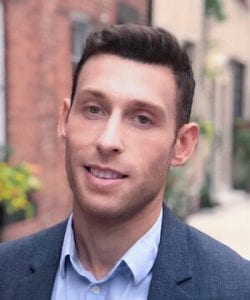“You can get people to stop judging…trustworthiness in the short term. The question is: how long do these things persist?”
 An interview with Jon Freeman, PhD (Department of Psychology, Center for Neural Science, NYU)
An interview with Jon Freeman, PhD (Department of Psychology, Center for Neural Science, NYU)
By: Michelle Johnson (March 12, 2021)
What questions are really exciting you right now?
I focus quite a bit on social category perception and how we process and initially perceive things like gender, race, and emotion. What we bring to the table as perceivers matters, like our expectations about other people, our implicit stereotypes, or what we’ve learned from our culture and our background knowledge about emotions (e.g., what does fear or disgust mean?). These things play a role in shaping [our perception of] social categories, gender, race, and emotion.
Another very important dimension on which we evaluate other people is personality traits, like trustworthiness, competence, and dominance. There are very specific arrangements of facial features that produce these impressions; like any instance of perception, they’re certainly subjective, but they’re highly predictable in terms of the particular facial features that drive these perceptions. We know very little at the neural level about how the brain represents the dozens of traits that you could judge from a face. [In our work], we’re focusing on how the brain is spontaneously generating these impressions from a representational standpoint, and we’re specifically focusing our interests on the anterior temporal lobe.
What might this mean for practical applications of your research?
From a more practical standpoint, bias intervention or bias reduction paradigms have long existed in social psychology for trying to reduce or eliminate racial bias or gender bias, but what has never really been considered empirically or theoretically is that judgments of facial stereotypes (e.g., trustworthiness, competent, dominance) could be reduced or eliminated.
Usually, researchers think about this from an evolutionary standpoint in the sense that we’re hardwired to judge a book by its cover, and you’re never going to get rid of this. However, even when holding aside race and gender and other issues, facial trustworthiness predicts criminal sentencing decisions, capital punishment, and who we hire and elect as our politicians. There’s a lot of important judicial, hiring, and other outcomes that stand to be reduced or eliminated through reduction techniques.
We’ve recently published a set of studies that show you can use what are called “counter-stereotype” interventions to re-map people’s associations. You can get people to stop judging the most primary dimension, trustworthiness, in the short term. The question is: how long do these things persist? Therefore, we’re trying to understand the neural basis of how this is represented automatically and spontaneously as well as how we can push this around. Or, is this as researchers have supposed, and this is evolutionarily hard-wired and we’re never getting rid of it? [That would be] quite unfortunate because this is predicting criminal sentencing and capital punishment decisions, and we should try to ameliorate that.
What has surprised you about the field?
I think there are stark differences in public communication about science as a field—most people think growing up, “I want to be a doctor, so I get an MD,” or “I want to be a lawyer, so I get a JD.” If you want to be a scientist, it’s not well-understood that you get a PhD. I think this is really unfortunate, especially as I’ve increasingly been doing work on STEM diversity issues and LGBTQ students in particular. There are a lot of crises in US STEM fields in attracting, retaining, and advancing individuals, certainly for those from under-represented backgrounds. This is not only in issue of equal opportunity but an issue of wasting STEM talent, hindering the US in scientific and technological progress. I think it’s a massive PR issue for STEM that we need to get better at.
To learn more about Dr. Freeman and his work, click here.
Click here to go back to the “Interviews with Scientists” page.
